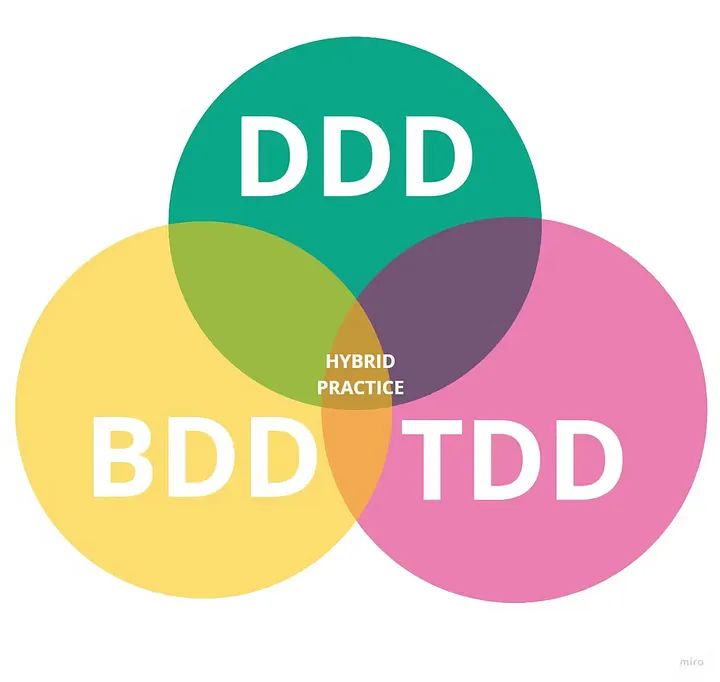Demystifying Behavior-Driven Development (BDD)
 Dinesh T
Dinesh T
Introduction to Behavior-Driven Development (BDD)
Test-driven development checks the code inside out and Behavior-driven development checks the system outside In
the statement briefs that Test-Driven Development (TDD) checks the system from the inside out, and focuses on ensuring the correctness of individual code units. In contrast, Behavior-driven Development (BDD) validates the system from the outside in and ensures that the entire system behaves as expected from the user’s perspective, for building robust software both TDD and BDD play a crucial role in Software Development.

Definition and purpose of BDD
BDD is a collaborative approach in software development that bridges the gap between the Technical teams and Business stakeholders. It focuses on defining system behavior through User Stories and Scenarios, written in a clear, shared language like Gherkin.
This human-readable format ensures that everyone from the developers to the non-technical Stakeholders can understand and contribute to the development purpose.
Benefits of Practicing BDD in Software Development
By aligning expectations early and automating these scenarios, BDD reduces ambiguity, enhances communication, and ensures that software performs as intended while maintaining up-to-date, living documentation.

Core Principles of BDD
The core principles of Behavior-Driven Development (BDD) are centered around enhancing collaboration, ensuring shared understanding, and focusing on delivering value.
Collaboration between developers, testers, and business stakeholders
BDD promotes strong communication between technical and non-technical teams. All stakeholders, including developers, testers, product owners, and business analysts, contribute to the development process. This ensures that the software meets business needs while remaining technically feasible.
Focus on user behavior and outcomes
The focus in BDD is on the behaviors the system should exhibit, derived from the user's perspective. Framing requirements in terms of desired user behavior, it ensures the software delivers the right functionality and aligns with business goals.
The key question becomes “What should the software do?”, not just how it should be implemented
Use of natural language for test scenarios
BDD uses natural language (e.g., English) to describe test scenarios in a structured format, such as Gherkin (
Given-When-Thensyntax). This approach allows non-technical stakeholders to understand and contribute to the development of features. It also helps in creating automated tests that validate that the software behaves as expected.
Key Components of BDD
User stories are short, simple descriptions of a feature from the perspective of the end user. They focus on what the user wants to accomplish. A typical format is:
- "As a [user role], I want to [goal] so that [reason]."
Scenarios are specific examples of how the system should behave in particular situations. Each user story can have multiple scenarios, which provide detailed steps that describe a single behavior or interaction with the system.
Gherkin Language and Syntax:
Gherkin is the language used to write BDD scenarios in a simple, human-readable format. It follows a structured syntax to describe test cases in plain language. The key components of Gherkin are:
Feature: Describes the feature being tested.Scenario: A concrete example that illustrates a specific functionality or behavior.Given: Pre-condition or context that must be met before the action occurs.When: The action or event that triggers a behavior.Then: The expected outcome or result of the action.Optional steps like
AndandButcan be used to extend the scenario.
Feature Files and Step Definitions:
Feature files are where the user stories and scenarios are written in Gherkin syntax. Each feature file represents a specific feature of the application and includes all the related scenarios.
Step definitions are where the actual code implementation for each Gherkin step resides. The steps like
Given,When, andThenin the feature files map to methods in the step definition files. These methods execute the logic needed to test the behavior described in the feature file.
Challenges and Limitations of BDD:
Common Pitfalls and How to Avoid Them:
Unclear or overly detailed scenarios: Avoid writing scenarios with too many details. Keep scenarios focused on behavior, not implementation details.
Lack of collaboration: BDD relies on collaboration between business stakeholders, testers, and developers. Poor communication can lead to mismatches between scenarios and actual business requirements.
Overly technical language: Using technical jargon in scenarios can make them inaccessible to non-technical stakeholders. Stick to plain, understandable language.
Limitations in Complex Projects:
Scalability: As projects grow, maintaining a large number of scenarios and feature files can become difficult, leading to issues with readability, reusability, and execution time.
Hard to define behaviors: In highly technical or complex systems, defining behaviors for every function might not always be straightforward, leading to ambiguity in scenarios.
Slow feedback loop: When a large number of BDD tests are executed, the feedback cycle can become slow, particularly if tests aren’t optimized for performance.

Tips for Writing Effective Scenarios:
Focus on business value: Scenarios should describe the behavior from the user’s perspective, ensuring they align with business objectives.
Keep scenarios short and precise: Scenarios should focus on one behavior or aspect of a feature at a time. Avoid long, complex steps.
Use the Gherkin structure effectively: Ensure that
Given,When, andThenclearly outline the preconditions, actions, and expected outcomes.
Integrating BDD into Existing Workflows:
Collaboration: Involve business stakeholders, testers, and developers early in writing the scenarios to ensure alignment.
Automated Testing: Integrate BDD scenarios with CI/CD pipelines to ensure tests run automatically as part of the software delivery process.
Version Control: Store your BDD feature files in the same version control system as your codebase, ensuring that they evolve with the application.
Case Studies and Real-World Examples
Success Stories from Companies Using BDD:

Spotify: Spotify has been known to use BDD to keep their development process focused on user-centric features, helping them scale features rapidly while ensuring quality.
Atlassian: Atlassian adopted BDD to improve communication between product owners, testers, and developers, which reduced the number of defects in their products like Jira and Confluence.
ThoughtWorks: As a pioneer in Agile and BDD practices, ThoughtWorks has helped numerous clients adopt BDD, resulting in better requirements clarity and higher-quality software.
Lessons Learned from BDD Implementations:
Start small: Don’t try to BDD everything. Focus on core features or new projects to demonstrate value.
Collaborate deeply: The most successful BDD projects emphasize deep collaboration between business and development teams.
Keep scenarios maintainable: Writing too many test cases can lead to difficulties in maintaining them over time. Focus on key behaviors and reuse step definitions where possible.
Github Project Link
A curated List of BDD Projects are in the repo clone it and use for the Hands on References
Conclusion
Recap of BDD's Impact on Software Development:
- BDD bridges the communication gap between business and technical teams by ensuring that software behavior is well understood before coding begins. It leads to better quality, fewer defects, and more alignment between what is delivered and what the user needs.
Future Trends and Developments in BDD:
AI-driven test case generation: With advancements in AI, future BDD tools may assist in automatically generating scenarios based on user stories or system behavior.
BDD and microservices: As more applications move to microservices architecture, BDD will likely play a greater role in defining and testing interactions between services.
Greater CI/CD integration: Continuous integration pipelines will be more tightly integrated with BDD frameworks, making behavior-based testing more streamlined and faster.
In conclusion, BDD provides a powerful way to ensure alignment between business requirements and technical implementation, but it also comes with challenges such as scaling in large projects and ensuring that scenarios remain maintainable over time. When done right, it leads to improved communication, better test coverage, and more predictable software development outcomes.
Subscribe to my newsletter
Read articles from Dinesh T directly inside your inbox. Subscribe to the newsletter, and don't miss out.
Written by

Dinesh T
Dinesh T
Passionate and committed DevOps Engineer with a solid grasp of computer science basics 💻, containerization 🐳, cloud tech ☁️, micro-services architecture 🏗️, and DevOps methodologies 🚀. Proficient in enhancing and overseeing CI/CD pipelines 🔄 and managing resilient cloud infrastructure 🌐 for maximum availability. I’m constantly broadening my expertise in DevOps, Cloud, and Technology 📚, and love sharing my insights with the community 🌍 in a more captivating and concise way.